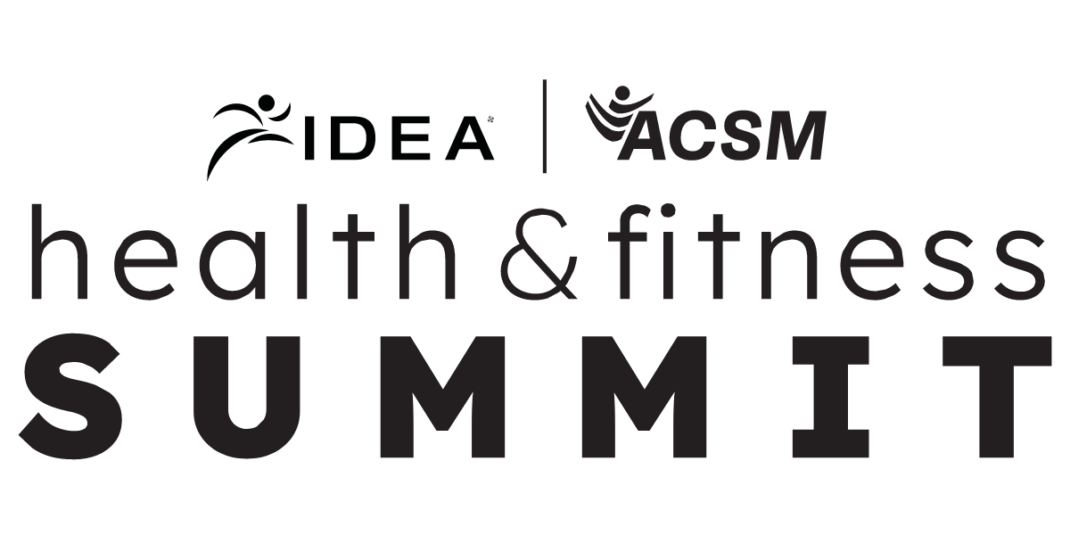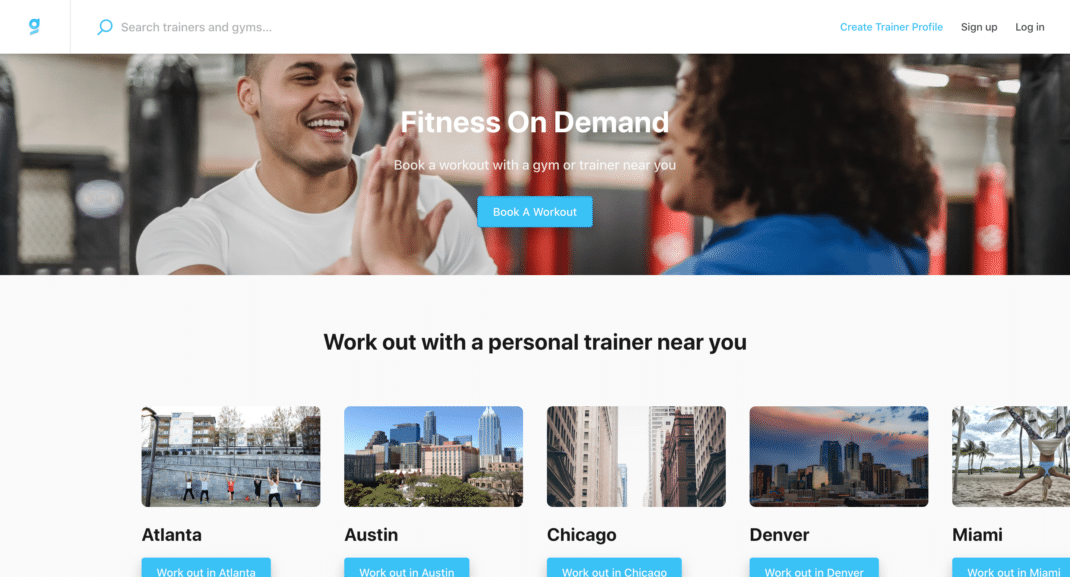Making Peace With Blogging
Consider blogging a burden? How blogging can work for you—and your business.
Getting a blog up and running is not a monumental task, even for people like me who know very little about HTML code or the technical side of how the Internet works. The rewards of having a blog include better Web presence and networking opportunities, another way to connect to clients and leads, and a do-it-yourself platform for promoting yourself as a fitness expert.
Consider this fact: on December 31, 2009, I purchased a domain name and a year’s worth of hosting for a new blog (for well under $100). On January 31, 2010, after spending about 1–2 hours a week playing around with design and features, I officially launched my new blog. Now, I’m talking about a self-hosted WordPress blog, which takes more fine-tuning than other blogging avenues. I could easily have put together a complete blog in a couple of hours with a free, user-friendly service such as Blogger. And so could you.
This article is meant to encourage you as a fitness entrepreneur to take the leap into the blogosphere. I won’t be covering the nuts and bolts of blogging, such as naming your blog or how to insert plug-ins (let alone what they are!). This piece is about convincing you to roll up your sleeves and contribute a little something of interest from time to time on a blogspot you can call your own. Nothing too technical, fancy or overwhelming. (For more detailed guidance on blogging, see the “Further Reading” sidebar.)
Perhaps you’re one of the many fitness entrepreneurs who haven’t started a blog. You’ve heard that you should have one. You know it would probably be good for your business. But you just haven’t gotten around to it yet, partly because blogging feels a bit intimidating. (Sound like the way some people talk about exercise?)
Most reluctant bloggers serve up one or more explanations about why blogging is not for them. Here are three common barriers to blogging, and why you can and should overcome them.
Barrier to Blogging #1:
I Don’t Have Time
Rebuttal. Sure you do, and here’s why: if you have time to market your business in other ways—by making fliers, sending out press releases, networking, generating referrals or developing a website—then you have time to blog. That’s because blogging and other online pursuits are part of the new way to market. (The old way is ignoring the business benefits of the Internet.)
Also, how much time are you spending on Facebook these days? Redirect some of that effort toward blogging and you’ll be fine. If you don’t “do” Facebook, congratulations. You’ve got even more time to blog than the rest of us.
Barrier to Blogging #2:
I’d Rather Interact With People in Person Than Online
Rebuttal. Good point. The fitness industry relies heavily on human interaction. However, the process of garnering clients usually doesn’t start there. Some potential customers would rather get to know you in the virtual world first before they give you money in the real world. This may be especially true if you deal with a younger clientele. For some prospects and clients, building relationships through a computer or cell phone is not only acceptable but preferable.
What’s more, blogging allows you to share useful advice and tips with (potentially) more people than you could interact with face to face, which brings us to the next why-I-don’t-blog excuse.
Barrier to Blogging #3:
I Wouldn’t Have Anything of Value to Say on a Blog
Rebuttal. Your clients would probably beg to differ; otherwise, what in the world are they paying you for? Your valuable guidance, right? When you’re selling someone on your services or products, you do it with the idea that you have the knowledge and expertise needed to help that person. Take the same attitude with blogging.
People care about what you have to say—that’s why they’ve either already hired you or are contemplating doing so. Of course, you can’t and don’t want to blog away all your wisdom for free. If you blog about only half of all the cool health and fitness things you know, you’ll still have plenty of gems reserved for paying customers.
How much do you currently know about blogging? Assess your knowledge by assessing whether the following five statements are true or false.
True or False: You’ve got to have good content if your blog is going to survive.
True. It makes sense that the most entertaining, informative and/or educational blogs have the most staying power. However, before you face writer’s block trying to come up with the world’s most brilliant blog post, let’s define “good content.” It’s basically anything that holds readers’ attention for all or most of the post. Anything that motivates people to comment. Anything that genuinely informs and/or entertains. Bottom line, it depends on what your readers want and need from your blog, whether it’s a good chuckle, new exercise ideas or advice on the best weight loss tactics. Once you’re clear on who your readers are (hint: if you’re blogging for business, your readers are probably your clients and people like them), delivering “good content” becomes more natural.
True or False: You should “write posts like you talk.”
True and False. I advise people to write in a conversational tone, which is a bit different from the commonly heard “write like you talk” suggestion. Here’s why: Have you ever transcribed a recording of someone talking? There are lots of run-on sentences and repetitive points because people don’t edit themselves when they talk.
When you give yourself carte blanche to write the way you talk, you risk sharing sloppy, meandering posts with the world. The fix: write that way as a starting point, to help you get your thoughts on screen. Then edit everything you’ve written before hitting the “publish” button. Go for content that is lively and conversational yet streamlined.
True or False: You must blog at least once a week to make blogging worthwhile.
False. Different folks have different theories on blogging frequency. Most professional bloggers recommend posting every day or two because it keeps readers constantly engaged in your blog’s culture and helps your blog to rank well on Google. Most of us are not professional bloggers, though.
My advice is to blog when you can, versus not bothering to have a blog at all. It’s like exercise. Doing at least some physical activity sure beats no exercise, ever. Take it from me, when there’s an issue you feel strongly about, you’ll be glad you have a blog you can rant on. (Just check out the number of fitness-blog rants about that August 2009 TIME magazine article purporting that “exercise won’t make you thin.”)
True or False: If you don’t like writing, there’s no point in having a blog.
False. First, writing becomes better and more enjoyable with practice. But let’s say it’s just not your thing. You can still keep a blog alive by posting other media, such as photos (e.g., show readers a new exercise every week) and your own or others’ videos (extremely easy to do when you copy and paste the codes that YouTube gives you). You can also ask clients to guest-post about their journeys from unfit to fit with the help of your services. And, yes, you can write your own posts in a scannable style that is relatively painless to accomplish and is what works best on blogs anyway. I’m talking about subheads, lists, bullet points, short sentences and short paragraphs.
True or False: Having a reader comment on your post is half the fun of blogging.
True! Blogs are interactive communities. Bloggers start conversations that others feel compelled to weigh in on. One way to invite feedback on your blog is to end your post with a question. For example, here’s how I wrapped up a post about blogging frequency: “What do you think? Is blogging like exercise in that you should just do it when you can, or should you commit to doing it at set times even if you don’t feel like it?”
In addition to building community, readers’ comments also allow you to zero in on potentially new blog topics, better ways to serve your clients and emerging demands in the fitness industry. You might not receive many comments, or any, at first, but with persistence, your readers and their level of interaction will grow—and hopefully so will your desire to be part of the blogosphere.
To learn more about how to put together a blog, consult these resources:
- “Creating a Client-Trainer Blog” by Biray Alsac, MS, IDEA Fitness Journal, 5 (1) 28–30.
- The Huffington Post Complete Guide to Blogging by the editors of The Huffington Post (Simon & Schuster 2008).
- Naked Conversations: How Blogs Are Changing the Way Businesses Talk With Customers by Robert Scoble and Shel Israel (Wiley 2006).
- ProBlogger: Secrets for Blogging Your Way to a Six-Figure Income by Darren Rowse and Chris Garrett (Wiley 2008).
Amanda Vogel, MA
Amanda Vogel, MA, is a fitness professional and the owner of Active Voice, a writing, editing and consulting service for fitness professionals. She writes for IDEA, Health, Prevention, and Self, and has co-authored books on postnatal fitness and yoga. With a master's degree in human kinetics, Amanda has worked in the fitness industry for more than 15 years, including time spent as a program director and vice president for a chain of all-women clubs in Vancouver, British Columbia.






